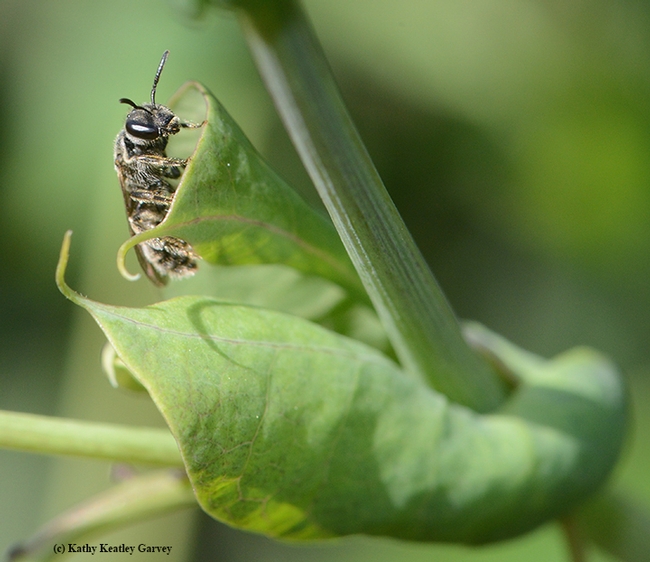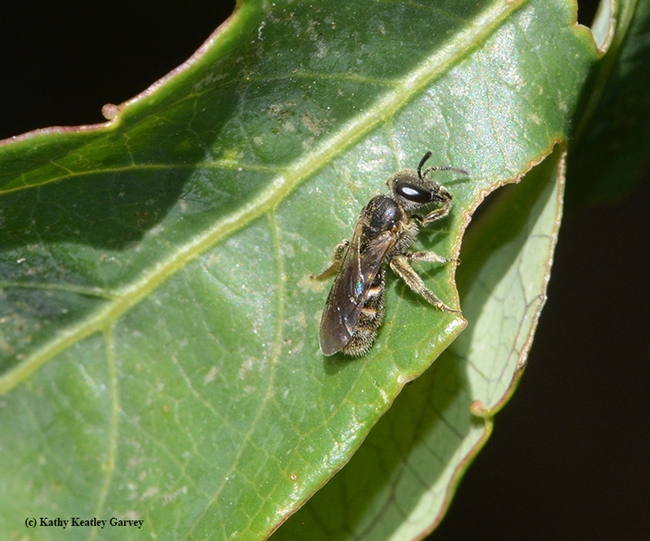At first glance, it appeared to be a gnat circling our head.
Then it landed on our passionflower vine (Passiflora). It cooperatively stayed still for a photo (taken with a Nikon D800 mounted with a 105mm macro lens) and then returned to its nest, a hole in the ground.
A tiny bee, but what bee?
"A female sweat bee in the genus Lasioglossum, subgenus Evylaeus which are the tiny black species in this large and diverse genus," said native pollinator specialist Robbin Thorp, distinguished emeritus professor of entomology at UC Davis, who maintains an office in the Harry H. Laidlaw Jr. Honey Bee Research Facility.
Lasioglossum, found worldwide, is the largest of all bee genera, containing more than 1700 species in numerous subgenera.
Bee identification is so intricate. This little sweat bee is similar to Halictus. "Lasioglossum differ from Halictus in the position of the hair bands on the abdomen," Thorp noted. "Halictus have well defined hair bands that are at the apex (end) of each tergite. In Lasioglossum, when hair bands are present, they are at the bases of the tergites."
Thorp is a veteran instructor at The Bee Course, affiliated with the American Natural History. An annual course held at the Southwestern Research Station, Portal, Ariz., it's offered for conservation biologists, pollination ecologists and other biologists who want to gain greater knowledge of the systematics and biology of bees, according to the organizers, Jerome Rozen Jr., American Museum of Natural History, and Ronald McGinley of Roseville.
Many UC students and faculty have attended the course, which draws participants throughout the world. This year's course runs from Aug. 22 to Sept. 1.
Want to apply to attend The Bee Course? Applications are now being sought. Check out the website for more information.
Attached Images:

